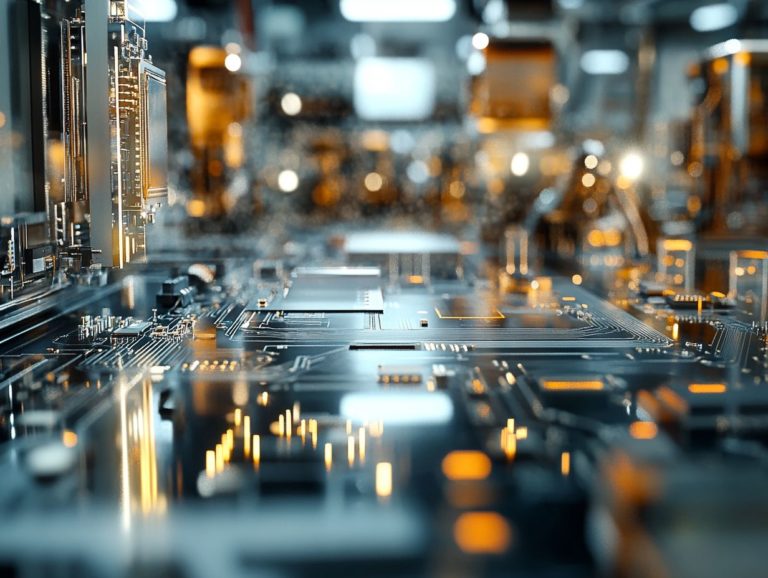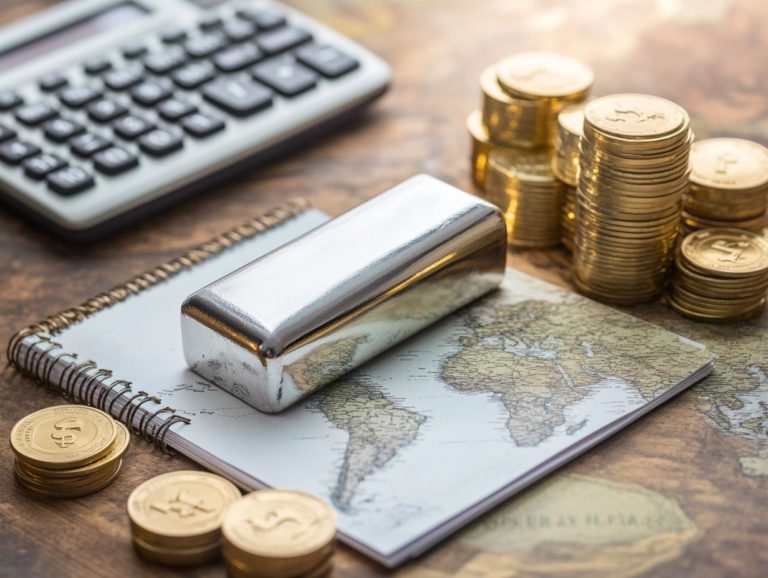5 Reasons to Consider Platinum for Your Portfolio
Platinum often takes a backseat to its more renowned counterparts like gold and silver, but it offers distinctive advantages that can elevate your investment strategy. Don’t miss out on the unique opportunities that platinum can bring to your investments. Let’s uncover five compelling reasons to consider adding platinum to your portfolio.
This article delves into five compelling reasons why you should consider incorporating platinum into your portfolio. From its ability to diversify your investments to its impressive performance in volatile markets, you ll find that platinum has much to offer.
It discusses how platinum acts as a hedge against inflation, the dynamics of its limited supply paired with growing demand, and the potential for high returns. You’ll also explore various investment avenues, key considerations, associated risks, and how platinum stacks up against other precious metals.
If you’re intrigued by the long-term growth prospects for this precious metal, keep reading!
Contents
Key Takeaways:
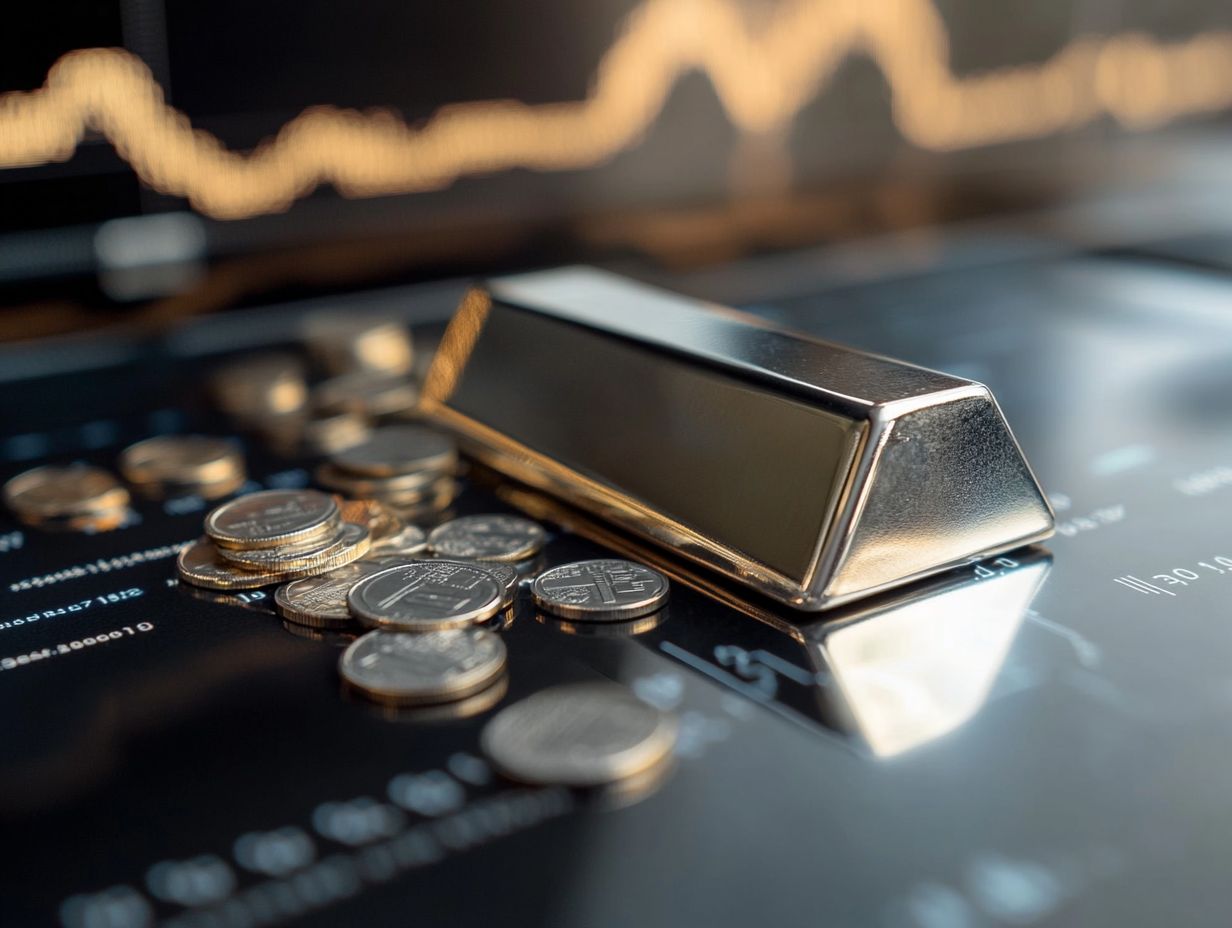
- Platinum offers diversification for your portfolio, as it is a unique and independent asset class that can help mitigate risk.
- Platinum has shown strong performance in volatile markets, making it a valuable addition to any investment portfolio.
- Platinum serves as a hedge against inflation, protecting your portfolio from the erosion of purchasing power.
1. Offers Diversification
Investing in precious metals like gold, silver, platinum, and palladium offers a unique way to diversify. These metals provide stability against market fluctuations.
With their exceptional demand and status as safe haven assets, these commodities play a vital role in achieving portfolio diversity. Their strong demand and status as safe haven assets explain their popularity.
As you seek high liquidity options and alternatives to fiat currency (government-issued currency not backed by a physical commodity), it’s clear why precious metals have gained substantial traction; their limited supply and resistance to inflation add to their allure.
This growing interest comes from how these metals respond differently under various economic conditions. For example, gold often surges during times of geopolitical tension or economic downturns, while silver tends to shine thanks to industrial demand, thriving in booming markets. Platinum and palladium, with their unique value drivers tied to the automotive sector, exhibit resilience as technology advances.
By thoughtfully integrating these metals into your investment strategy, you can not only hedge against potential market downturns but also seize opportunities stemming from their distinctive characteristics.
2. Strong Performance in Volatile Markets
Precious metals have consistently demonstrated their strength in volatile markets, enabling you to navigate periods of economic uncertainty with greater confidence through investments in gold and silver.
Historically, these assets have served as a dependable buffer during crises. Take the 2008 financial crash, for instance, when gold prices surged by over 25%, standing in stark contrast to the plummeting stock market. Similarly, during the COVID-19 pandemic, gold soared to an all-time high of nearly $2,000 per ounce, as investors sought refuge in safe havens.
With their inherent liquidity, precious metals can be effortlessly bought or sold, ensuring you have quick access to cash when you need it most. These characteristics highlight the compelling role of precious metals in safeguarding your wealth amid economic turbulence.
3. Inflation Hedge
Investing in precious metals can be an effective hedge against inflation, offering a level of protection that fiat currencies often fail to provide. This makes gold investment particularly appealing for those like you who are seeking stability in uncertain times.
In today s economic landscape, with inflation rates climbing, the purchasing power of cash is dwindling at an alarming pace. You might notice that the same amount of money buys fewer groceries or fills your gas tank less each year as prices continue to surge.
During these inflationary periods, precious metals such as gold and silver have a historical track record of maintaining their value, often appreciating as investors flock to these assets for a sense of security. In countries grappling with extreme inflation, like Venezuela, currencies have lost significant value, prompting many to turn to gold as a reliable means of preserving their wealth.
This resilience is what positions these metals as highly sought-after safe-haven assets, providing you with a safeguard against the volatility of financial markets.
Ready to diversify your portfolio with platinum? Start exploring your investment options today!
4. Limited Supply and Increasing Demand
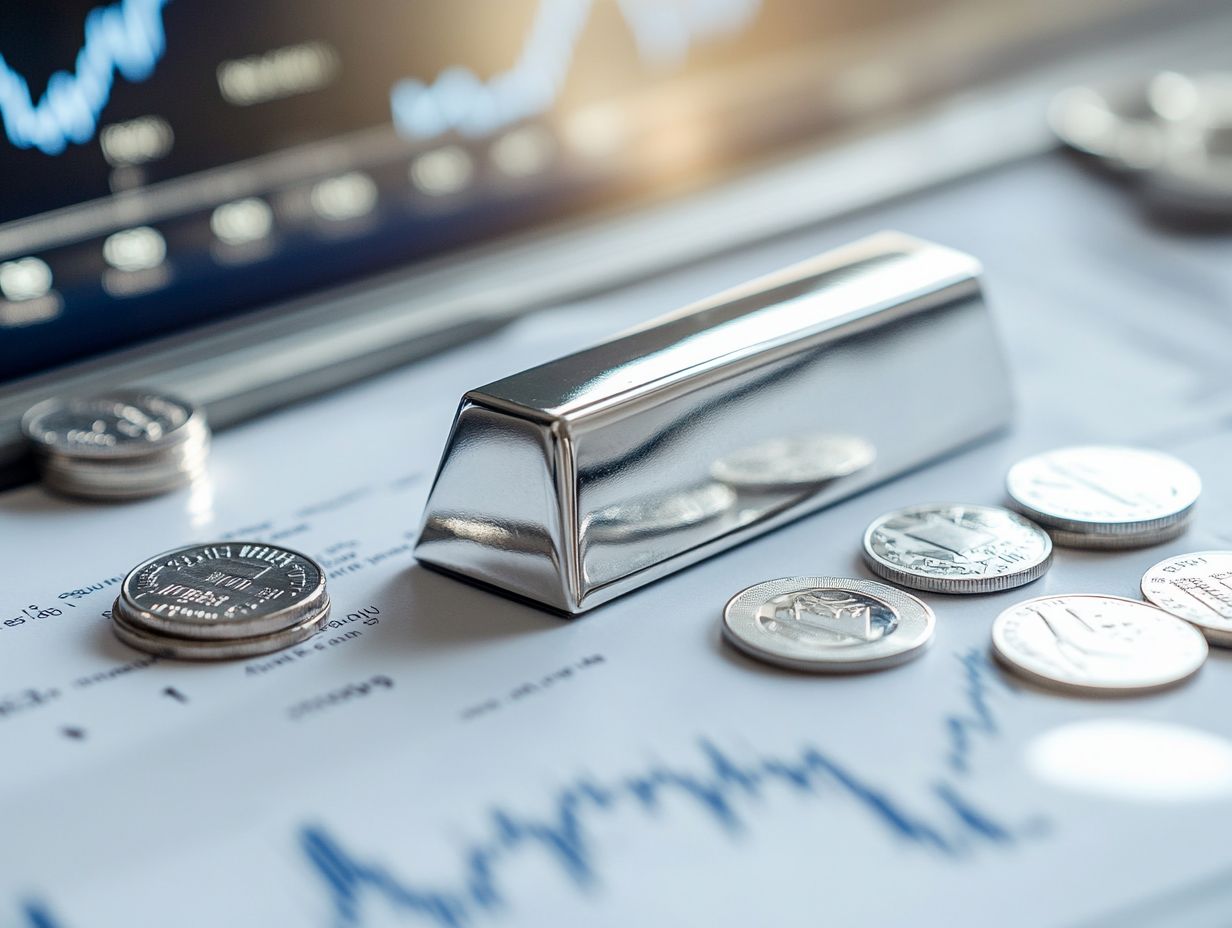
The limited supply of precious metals and rising market demand create a strong investment opportunity. This is especially true for gold, silver, and platinum.
Several factors contribute to the limited availability of these essential resources. For example, geological constraints often restrict mining operations.
Geopolitical tensions can also affect production in critical areas like South Africa and Russia.
As industries increasingly use these metals for electronics, renewable energy, and jewelry, supply struggles to keep up with demand. This imbalance drives market prices higher.
Smart investors recognize the long-term value in these sectors. By making strategic allocations, they strengthen their portfolios and shield against economic uncertainties.
5. Potential for High Returns
The potential for high returns in precious metals is hard to resist. This is particularly true for gold, silver, and platinum.
Historically, these metals have been resilient during economic downturns. They often serve as a reliable hedge against inflation and currency fluctuations.
When market demand shifts due to geopolitical issues, you may see significant increases in the value of these assets. Diversifying your portfolio to include these metals can protect your capital.
This diversification may also improve your chances of achieving superior returns compared to traditional investments like stocks and bonds. Understanding historical price trends helps you make informed decisions.
What Is Platinum and How Is It Used in Investing?
Platinum is a precious metal known for its exceptional value and unique qualities. It s a great choice for investors looking to diversify their portfolios.
This rare metal is crucial in various sectors. In the automotive industry, it s key for catalytic converters that reduce harmful emissions.
With the push for greener technologies, demand for platinum is growing. This demand influences both its investment potential and its role in manufacturing.
The need for platinum can cause market prices to fluctuate. Changes in automotive production or technological advancements can affect how much is required.
It s important to consider both industry trends and overall economic conditions when looking at platinum’s market dynamics.
What Are the Different Ways to Invest in Platinum?
There are many ways to invest in platinum. Options include physical bars, coins, and Exchange-Traded Funds (ETFs).
Each method has its advantages based on your preferences and strategies. If you buy physical platinum, you ll have tangible ownership, which some investors prefer.
But remember, purchasing physical metal often involves higher costs for storage and insurance. Platinum coins are popular for their liquidity and collectibility, making them easy to trade.
ETFs provide a simpler way to gain exposure to platinum without storage hassles. They also have lower transaction costs and better liquidity, appealing to those seeking cost-effective diversification.
What Are the Key Factors to Consider When Investing in Platinum?
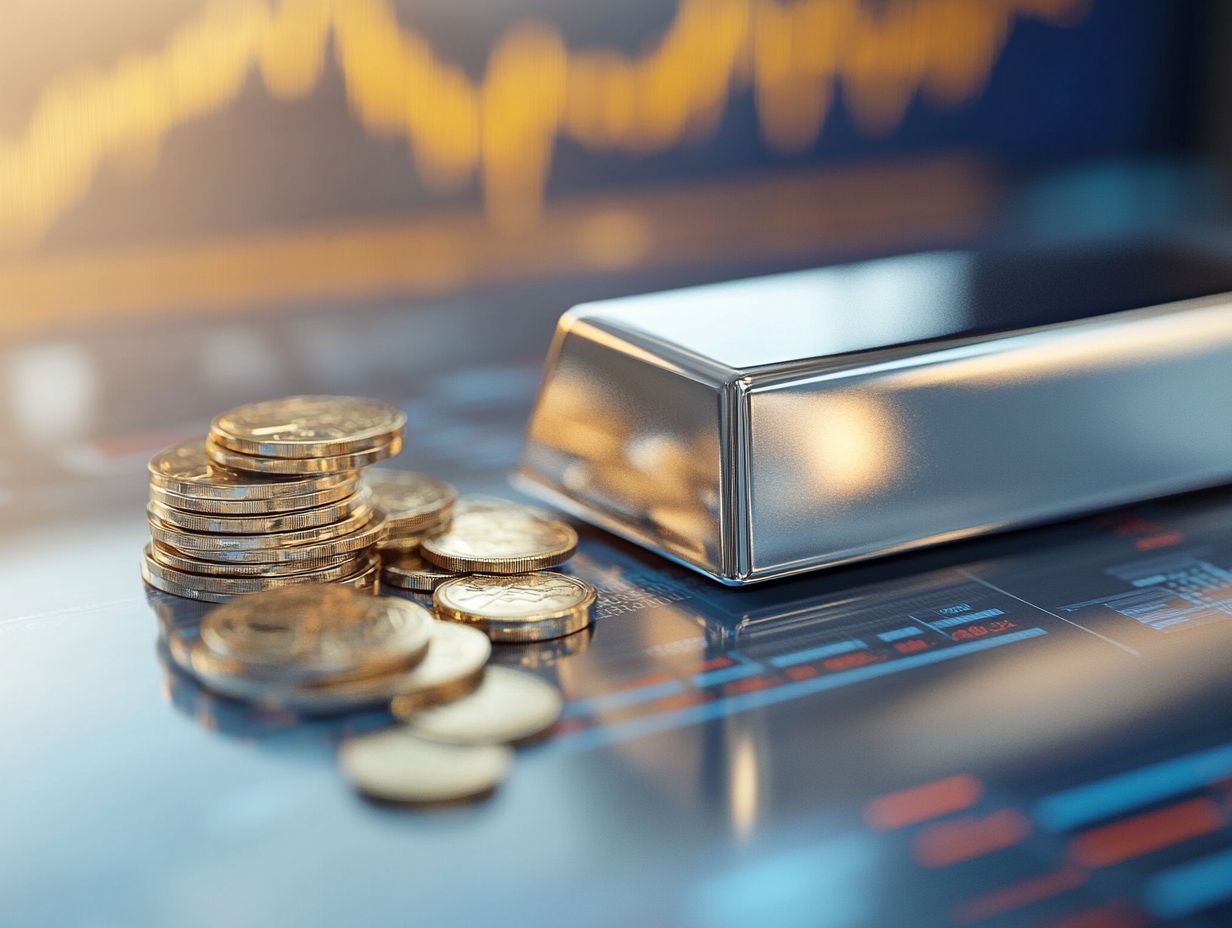
When you consider investing in platinum, there are several key factors to weigh. These include its unique investment characteristics, market demand, and the industrial needs that drive its price.
The dynamics of supply are critical. Any disruptions in mining operations or shifts in production levels can significantly alter market availability. Pay attention to economic indicators like inflation rates and currency fluctuations, as these can directly impact platinum’s value. It’s essential to keep a close eye on these trends.
Changes in global political events, such as trade tensions or political instability in major producing regions, can disrupt the delicate balance of supply and demand. This might lead to unpredictable price movements. By understanding these multifaceted elements, you can make informed decisions, allowing you to navigate the often volatile platinum market with greater confidence and strategy.
What Are the Risks Associated with Investing in Platinum?
Investing in platinum comes with its fair share of risks. Market fluctuations and shifts in industrial demand can significantly impact its value.
Take, for example, the economic downturn of 2008. Prices took a nosedive from around $2,300 per ounce to approximately $800. This stark drop underscores just how sensitive platinum is to global economic forces. Additionally, changes in the automotive industry, where platinum plays a crucial role in devices in cars that reduce harmful emissions, can create sharp alterations in demand.
To navigate these risks, consider diversifying your portfolio with other precious metals or assets known for their robust historical performance during economic uncertainties. Stay informed about market trends to navigate volatility effectively. Adopting a long-term investment strategy can also aid in managing the volatility typically associated with platinum markets.
How Does the Price of Platinum Compare to Other Precious Metals?
The price of platinum is known to fluctuate in relation to other precious metals like gold and silver. This adds a layer of complexity to your investing strategies and market analysis.
Historically, there have been times when platinum traded at a premium over gold. This highlights its rarity and industrial demand, particularly in the automotive sector for catalytic converters. In contrast, gold continues to shine as a safe-haven asset during times of economic uncertainty, while silver s price tends to reflect trends in industrial growth.
The dynamics among these metals are influenced by a variety of factors. These include global political events, shifts in manufacturing, and market sentiment. By grasping these interconnections, you can gain valuable insights that enable you to make more informed decisions, taking into account the unique characteristics and historical behaviors of each metal.
What Are the Long-Term Growth Prospects for Platinum?
Platinum’s long-term growth prospects are exciting! This is thanks to its unique investment characteristics and the burgeoning industrial demand, especially in the automotive sector.
As global trends increasingly favor greener technologies and sustainable practices, this precious metal is gaining value for its crucial role in catalytic converters and fuel cells. Moreover, advancements in industrial applications particularly in electronics and hydrogen production are broadening its utility beyond traditional uses.
With nations pouring resources into clean energy initiatives, you can expect the demand for platinum to rise, signaling a favorable market landscape.
Investors like you are keenly observing these developments. Technological innovations could significantly boost platinum’s appeal and long-term viability, reinforcing its status as an essential resource for the future.
Frequently Asked Questions
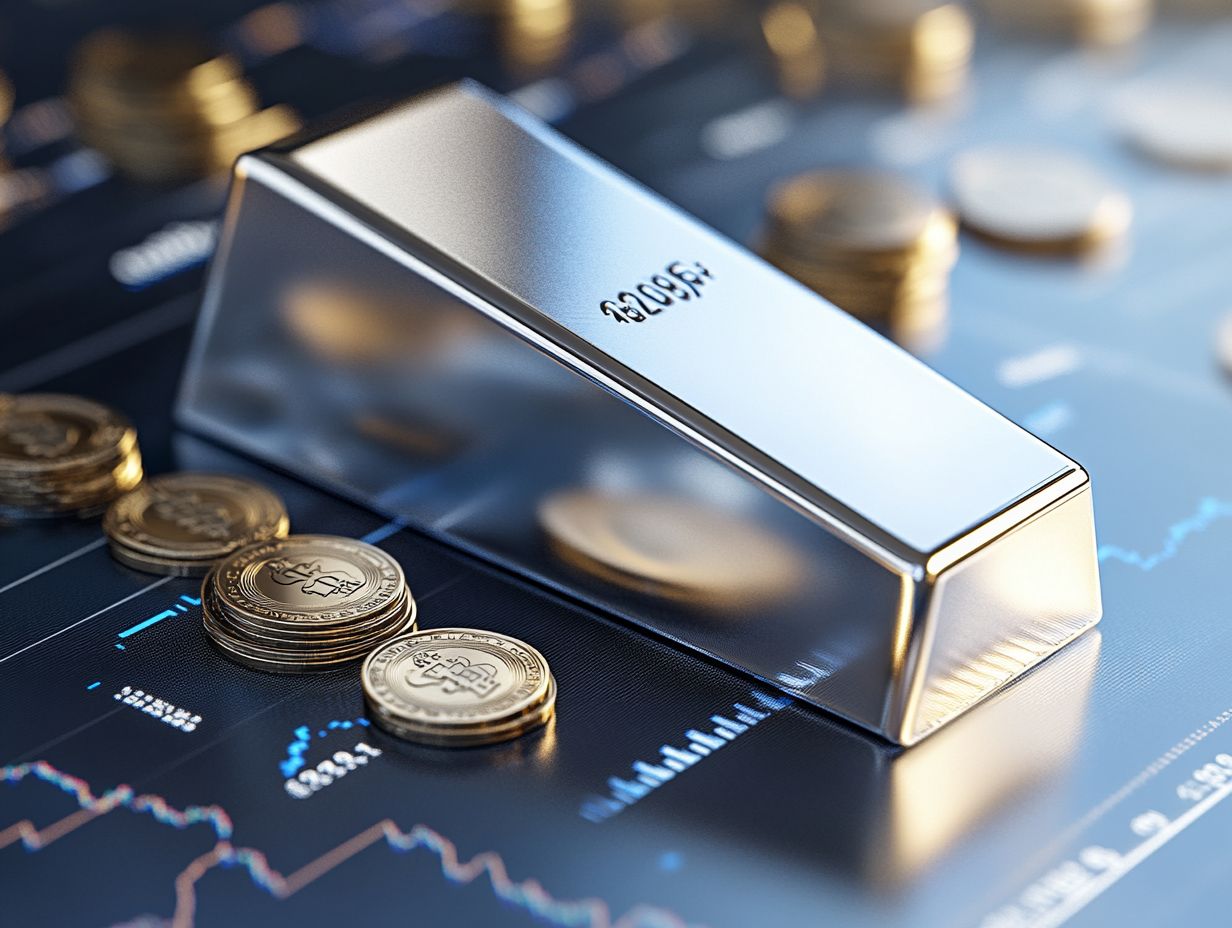
What is platinum?
Platinum is a precious metal used in various industries, including jewelry, electronics, and automotive manufacturing.
Why should I consider platinum for my portfolio?
Platinum is a valuable addition to your portfolio for several reasons. It’s rare, in high demand for industrial use, and can protect your money from losing value over time.
How is platinum different from other precious metals?
Platinum stands out due to its unique properties. It’s denser than gold and silver and resists corrosion and tarnishing better than other metals.
What are some potential risks of investing in platinum?
Investing in platinum carries risks like market fluctuations and political changes around the world. There can also be shifts in industrial demand.
What are some ways to invest in platinum?
You can invest in platinum in different ways. Options include buying physical bars or coins, investing in mining companies, or purchasing futures contracts.
Can I expect a return on my investment in platinum?
Platinum has historically shown strong long-term returns. It can enhance a diversified investment portfolio, making it an exciting option to consider!











